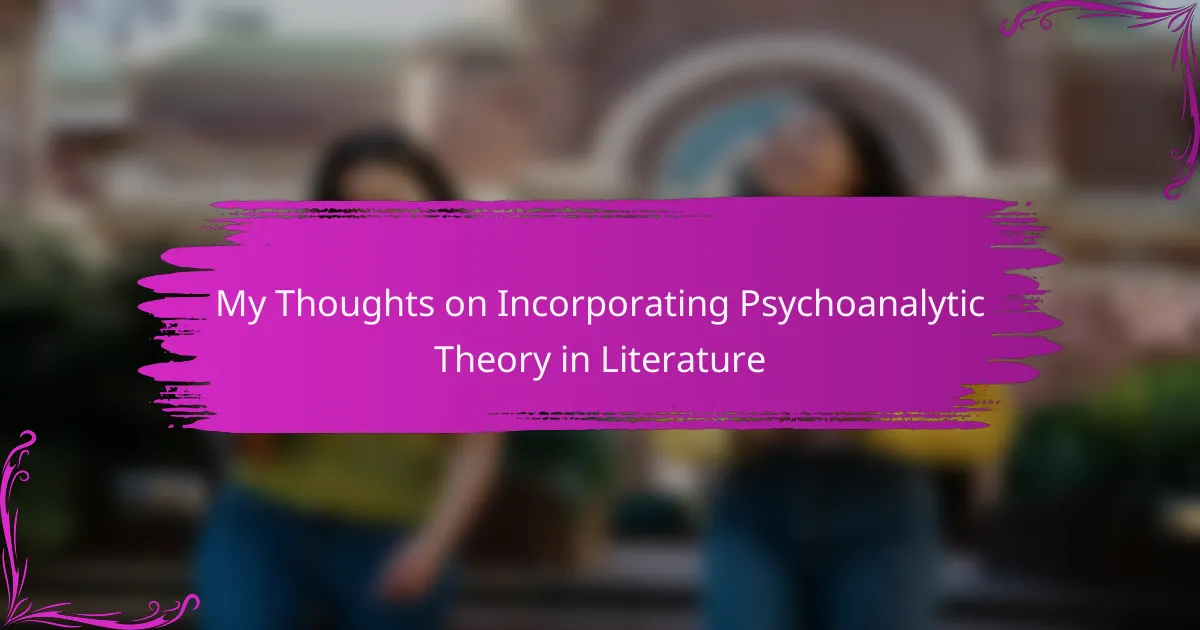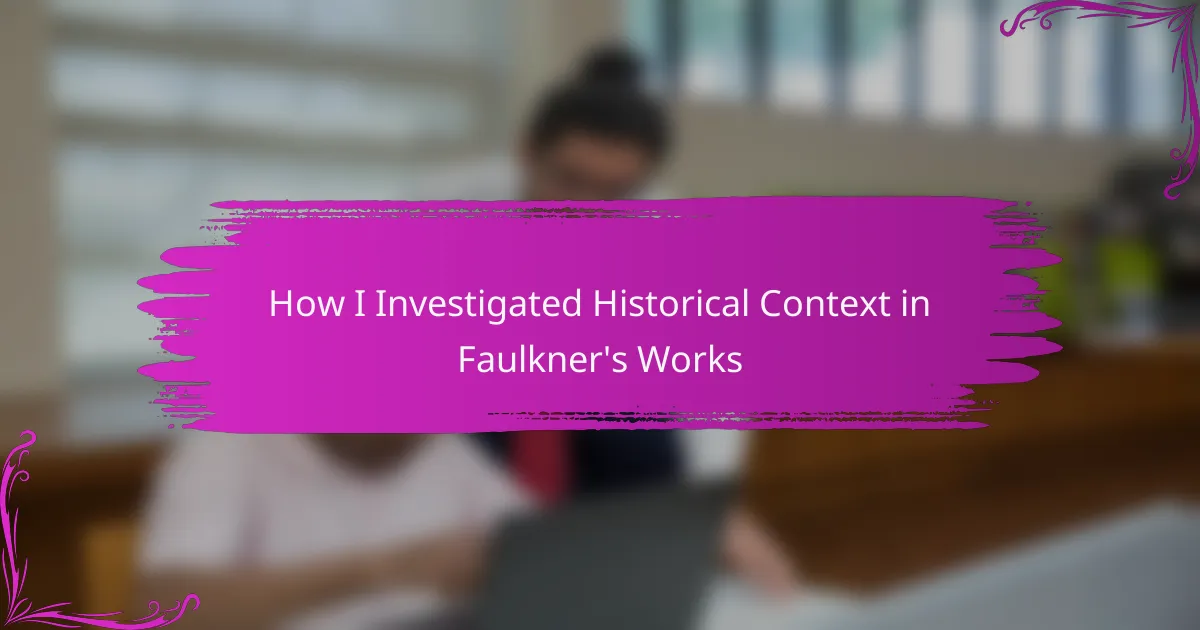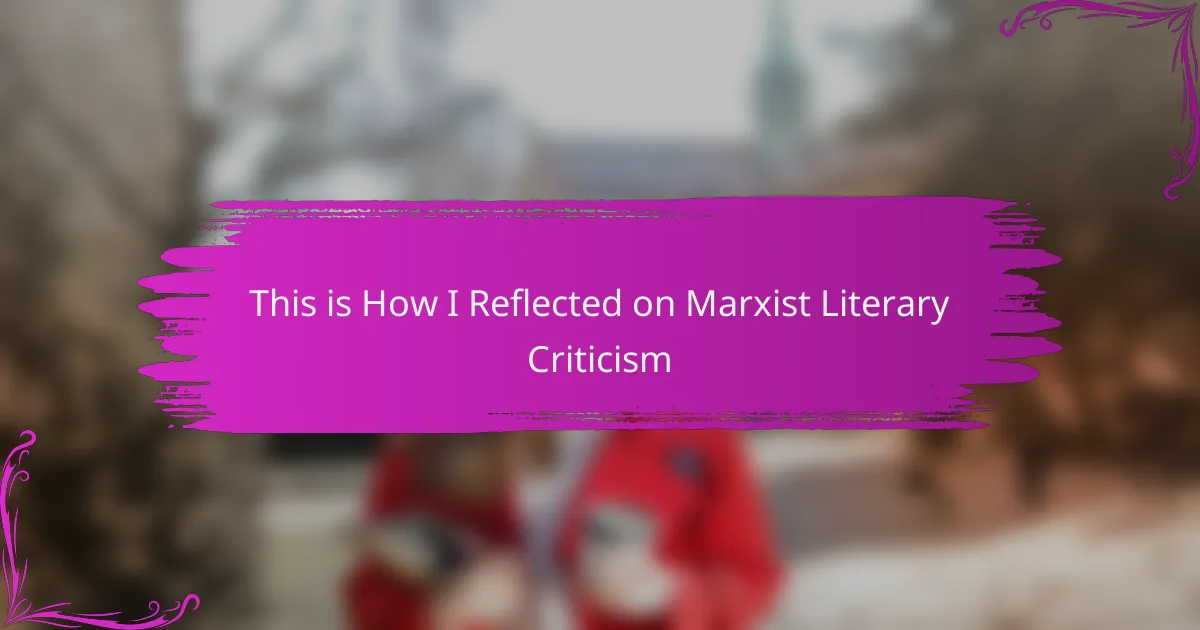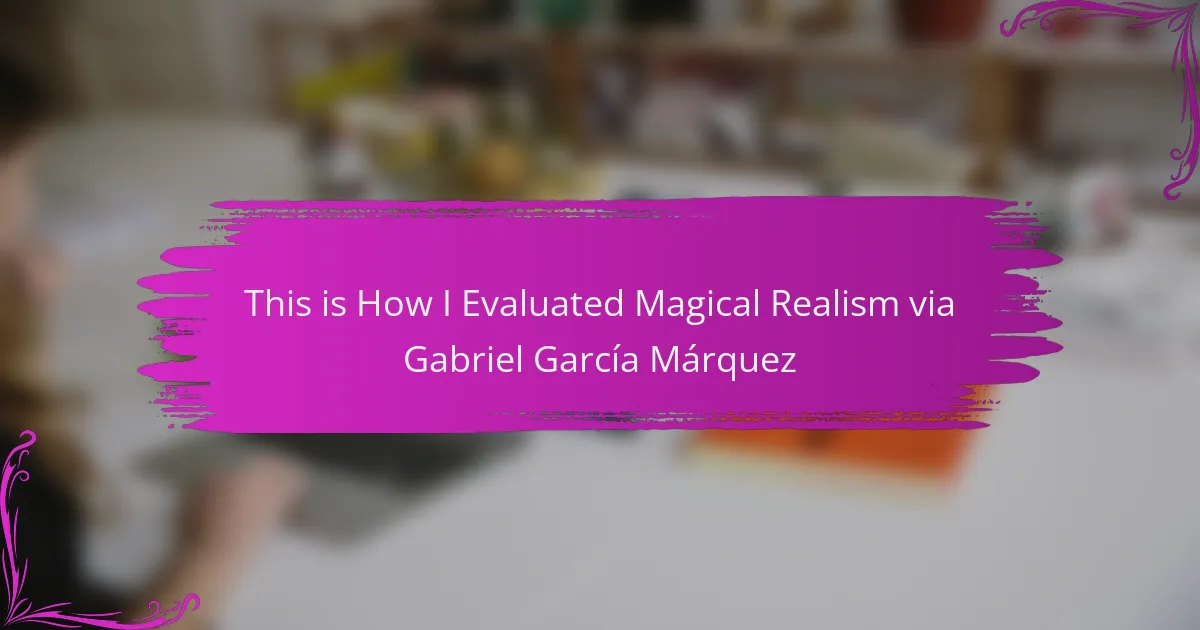Key takeaways
- Psychoanalytic theory explores the unconscious mind, revealing hidden motivations and emotional struggles in characters.
- This approach deepens understanding of literature by connecting personal experiences with characters’ internal conflicts.
- Techniques like character motivation analysis and symbolic interpretation help uncover deeper meanings in texts.
- Applying psychoanalysis enriches the reading experience, transforming literature into a reflection of human emotions and societal issues.

Definition of psychoanalytic theory in literature
Psychoanalytic theory in literature primarily explores how unconscious desires and inner conflicts shape human behavior and creativity. Originating from Freud’s ideas, this approach dives into characters’ psyches, revealing hidden motivations and emotional struggles. Personally, I’ve found that this lens deepens my understanding of both characters and the author’s intentions, making stories more compelling and relatable.
When I reflect on characters like Hamlet, I see the layers of conflict that mirror our own internal battles. This makes me ponder how much our personal experiences influence our interpretations of literature. For me, it often feels like peeling back the layers of an onion—each layer reveals something new and important.
| Psychoanalytic Theory | Literary Analysis |
|---|---|
| Focus on Unconscious Mind | Examines Characters’ Motivations |
| Authors’ Personal Experiences | Influence on Themes and Symbols |
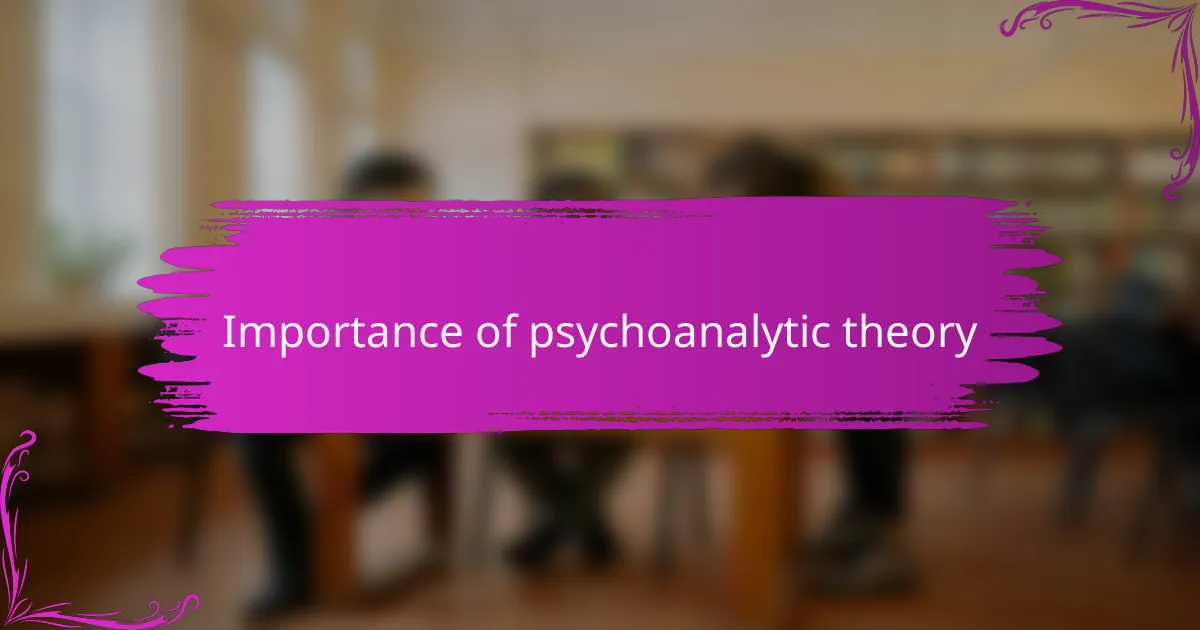
Importance of psychoanalytic theory
Psychoanalytic theory is vital in literature because it opens up a window into the complexities of human behavior. When I analyze characters through this lens, I often find myself asking, “What drives them to make such choices?” It’s fascinating how understanding their unconscious yearning can illuminate not only their actions but also the themes woven throughout the narrative.
One of my favorite aspects of this theory is how it helps unpack the emotional weight of characters’ struggles. For instance, in classic novels where existential conflict reigns, psychoanalysis allows me to see beyond the plot. It fosters a deeper connection as I recognize my own uncertainties reflected in these fictional dilemmas.
Additionally, this approach invites readers to empathize more fully with the characters. I remember reading “The Catcher in the Rye” and feeling a profound connection to Holden Caulfield’s inner turmoil. The exploration of his psyche allowed me to relate his experiences to my own, revealing shared human issues like alienation and identity crises that resonate well beyond the text.
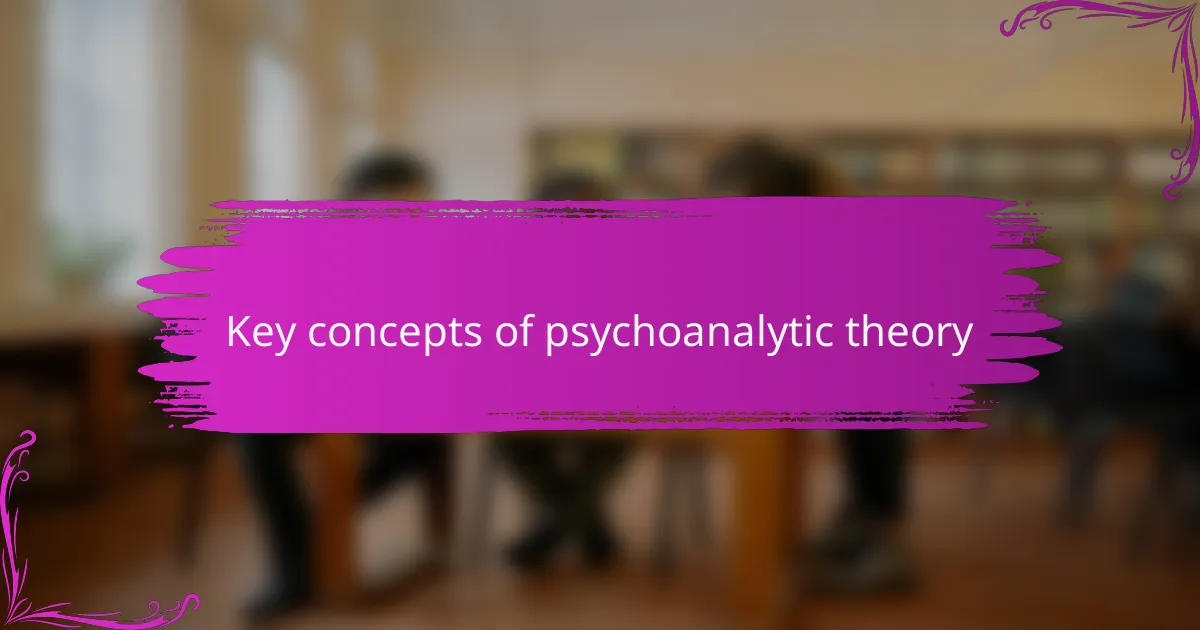
Key concepts of psychoanalytic theory
Psychoanalytic theory, primarily developed by Sigmund Freud, revolves around understanding the unconscious mind and its influence on behavior. I often find it fascinating how literature can be a mirror reflecting our innermost thoughts and conflicts, which align with Freudian concepts. For instance, the idea of the id, ego, and superego creates a framework for analyzing characters and their motivations, providing depth to their actions.
As I delve into characters’ psyches in various narratives, I come to appreciate how repressed desires often surface, leading to conflict. It’s incredible how a seemingly straightforward plot can unravel into layers of complex emotions when viewed through a psychoanalytic lens. This duality can leave readers pondering their own experiences, just as I did when exploring pieces like Dostoevsky’s “Crime and Punishment.”
- The unconscious mind: The part of the mind that influences thoughts and behaviors without conscious awareness.
- Id, ego, and superego: Freud’s model of human psyche, where the id seeks pleasure, the ego mediates reality, and the superego embodies moral standards.
- Repression: A defense mechanism where unacceptable thoughts and feelings are pushed out of conscious awareness.
- Defense mechanisms: Psychological strategies that help individuals cope with anxiety and maintain self-image.
- Free association: A technique used to explore the unconscious by allowing thoughts to flow freely, often revealing hidden feelings.
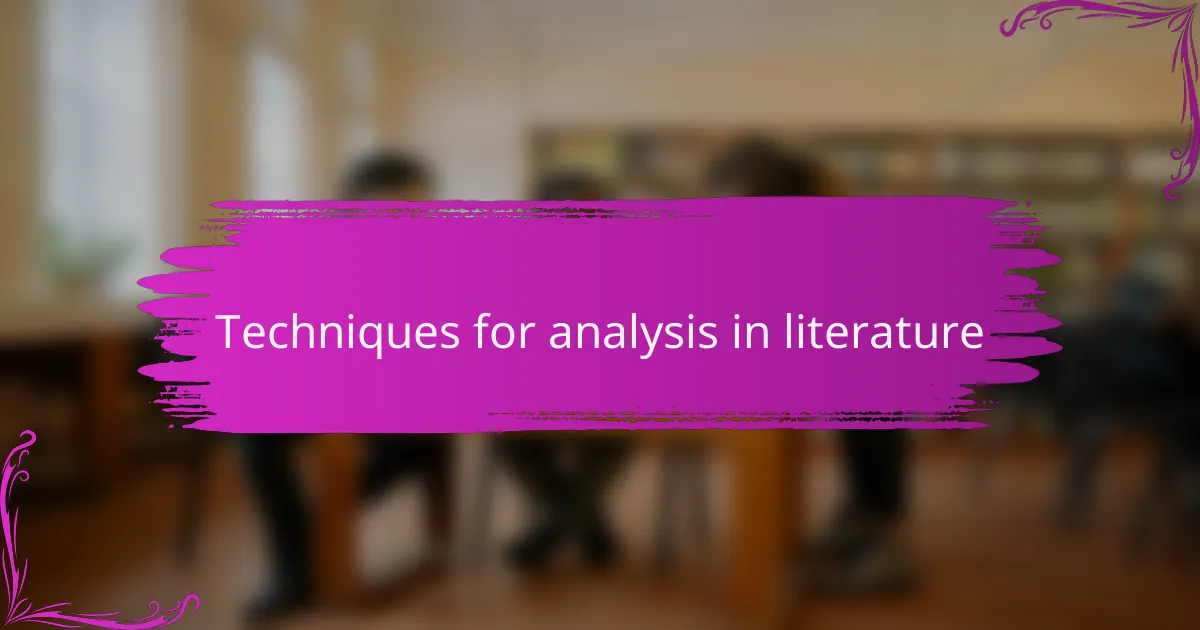
Techniques for analysis in literature
When analyzing literature through a psychoanalytic lens, I often find that various techniques reveal layers of meaning that aren’t immediately obvious. For example, paying attention to character motivations is crucial. I remember reading Fitzgerald’s “The Great Gatsby” and discovering how Gatsby’s desire for social acceptance stemmed from his childhood experiences. This revelation added a rich complexity to the character, enabling me to empathize with him on a deeper level.
Another valuable technique is examining symbols and imagery. In my experience, these elements often reflect the psyche of characters or the overarching themes of the narrative. For instance, in “The Catcher in the Rye,” the recurring motifs of the red hunting hat and the ducks symbolize Holden Caulfield’s struggles with identity and transition. When these symbols are unpacked, they can deepen our understanding of the emotional experiences presented in the text.
Here are some useful techniques for psychoanalytic analysis in literature:
- Character Motivation Analysis: Explore the backstory and psychological drives of characters.
- Symbolic Interpretation: Identify and analyze symbols to uncover deeper meanings.
- Dream Analysis: Consider characters’ dreams and subconscious thoughts as reflections of their desires.
- Conflict Exploration: Examine internal conflicts within characters that reveal their emotional struggles.
- Authorial Intent Investigation: Reflect on the author’s background and how it influences thematic elements.
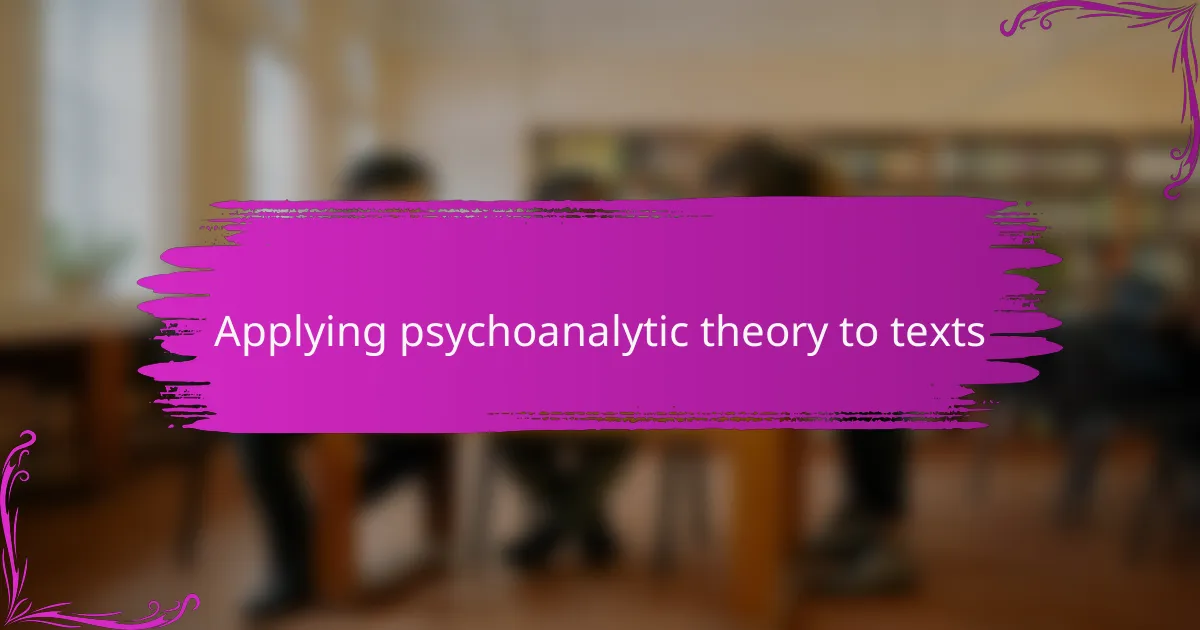
Applying psychoanalytic theory to texts
In my experience, applying psychoanalytic theory to texts can be a fascinating exercise. It allows us to uncover deeper motivations behind characters’ actions and the author’s intentions. For instance, when I analyzed Sylvia Plath’s “The Bell Jar,” I found that understanding Esther Greenwood’s descent into depression illuminated the thematic exploration of identity and societal expectations.
Moreover, I often find that interpreting literature through a psychoanalytic lens enriches my understanding of human nature. Take Shakespeare’s “Hamlet” as an example; the interplay of repression and desire in Hamlet’s psyche reveals a complex web of familial relationships and internal conflicts. This approach encourages readers to reflect on their own emotions, making literature not just a story but a mirror of the human experience.
| Aspect | Psychoanalytic Approach |
|---|---|
| Character Motivation | Exploration of unconscious desires |
| Themes | Examination of trauma and identity |
| Author’s Intent | Insight into psychological struggles |
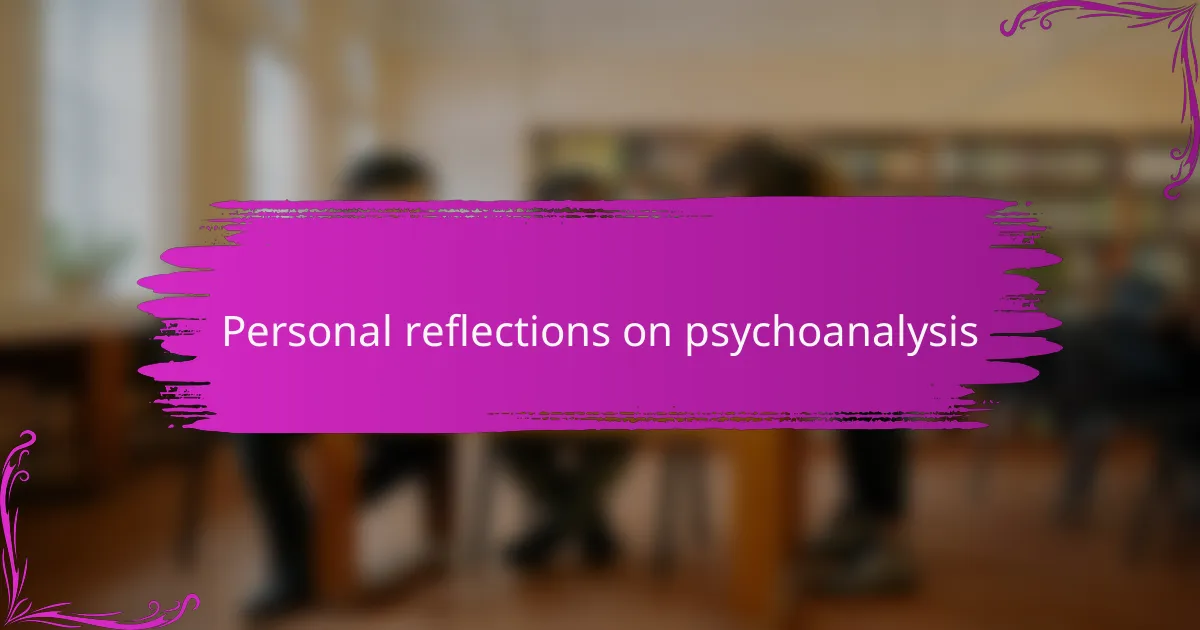
Personal reflections on psychoanalysis
Diving into psychoanalytic theory has profoundly changed the way I read and appreciate literature. I still remember reading a novel where the protagonist’s internal struggles mirrored my own experiences, allowing me to empathize with them on a deeper level. Recognizing the psychological underpinnings in characters’ behaviors offers a more nuanced understanding of their motivations, which I find both enlightening and enriching.
Reflecting on the emotional impact of applying psychoanalytic theory in literature, I’ve often discovered hidden dimensions in texts that I would have otherwise missed. The exploration of the subconscious sometimes feels like peeling back layers of an onion; with each layer, I find new insights that resonate on a personal level. For instance, observing how unresolved trauma can shape characters’ decisions has prompted me to reflect on how those themes resonate with our contemporary societal issues.
- Engaging with characters’ psyches deepens emotional connections.
- Psychoanalysis uncovers themes of repression, conflict, and desire.
- Personal experiences often resonate with characters’ inner struggles.
- Understanding psychological motivations elevates thematic analysis.
- The exploration of the subconscious adds richness to literary interpretation.
